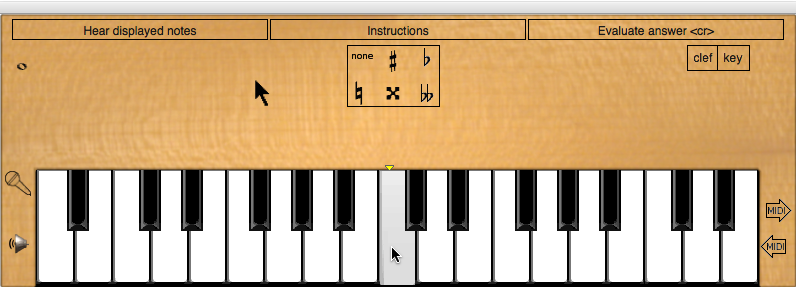

All of the exam dates are printed in the course syllabus. (Provided it is still an authentic cadence).Ī: Yes. Q: When a PAC is missing one of the attributes does it automatically become an IAC?Ī: Yes. In subsequent courses, you will be learning about other kinds of scales (modal, pentatonic, wholetone, etc.) Q: Are we done with scales or will we learn more?Ī: We will not be learning any new scales this semester. Also, cadences can't end on second inversion chords. The iii to I is not a normal harmonic progression. Q: When a iii6 resolves to a I64, could that be considered a cadence?Ī: No. Q: Is perfect authentic the most often used cadence? Q: Will every single phrase end in one of the 4 cadences we've learned? Q: With a Phrygian cadence, does it matter if the key is major or minor?Ī: A Phrygian half cadence only occurs in minor: iv6 to V. The 2 and 3 refer to the intervals formed between the bass and tenor. Q: Can a plagal cadence ever contain an inversion.Ī: A 2-3 suspension indicates a suspension taking place in the bass-part. Q: Do you ever perform on your instrument of choice for audiences? It may have a tie or it may simply have two repeated notes.Ī: The seventh scale degree is raised to TI in minor in order to form a major dominant triad or a diminished leading -tone triad. Q: To identify a suspension, will it always have a slur?Ī: It will never have a slur. Sometimes, however, in an authentic cadence you may triple the root of the final tonic (omitting the 5th). Q: What is the most common doubling in cadences.Ī: The doubling of chord in cadences is basically the same as when these chords are used elsewhere. Q: Does the soprano have the root in a deceptive cadence? That is why you have homework assignments: to practice applying knowledge. Q: If we apply knowledge we learn on a test, shouldn't we practice applying it before that?Ī: Yes. There are doubling, voicing, and harmonic concerns particular to 2nd inversion chords. To USE a 2nd inversion chord properly in a musical passage involves more than just the bass note. Q: What is so hard about 2nd inversions? Isn't it just a change in bass note?Ī: To create a generic 2nd inversion chord, yes it is just a change in bass note. Q: Are suspensions always more common than retardations? Q: Are pedal points most common in cadences (as are anticipations)? Q: Will there be a similar composition project next semester? Q: Is it correct to say that there can be no augmented intervals in any voice? Inversions of a V chord would be represented V6 or V64. Q: Is a V7 chord the same as a V chord in inversion?Ī: No a V7 (dominant 7th) is a dominant triad with an added 7th above the root.

You still need to know scales, intervals, triads, etc.

Q: Is the final cumulative or just what we learned since the midterm.Ī: The focus is on material learned since the midterm, but this material is already cumulative. Q: Does a chordal skip have to be a leap of a 4th every time?Ī: No, it may be a skip to any chord member and therefore could be a 3rd, 5th, or 6th as well. Q: Is it OK if we used an anticipation in our compositions? An anticipation is an early entrance of a note from the following chord.

Q: What is the difference between a suspension and an anticipation?Ī: A suspension is a delay (or restatement) of a note from the previous chord.


 0 kommentar(er)
0 kommentar(er)
